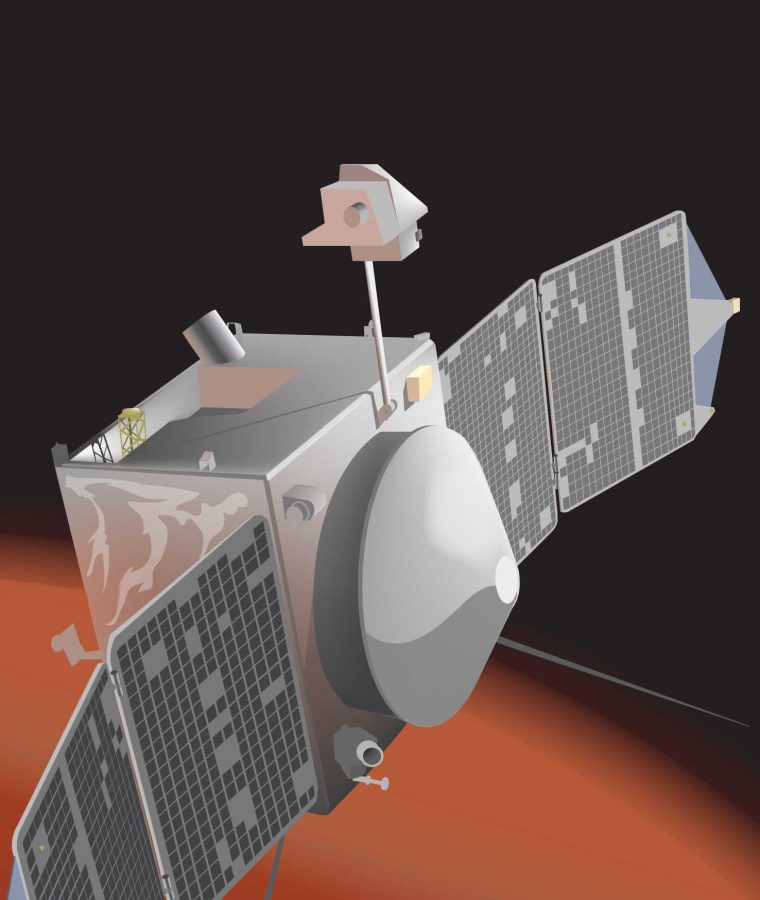MAVEN spacecraft hopes to provide information on Mars’ history
NASA’s MAVEN spacecraft finally arrived at Mars. It hopes to perform more atmospheric studies rather than stay the course of other studies in the past.
October 16, 2014
NASA’s Mars Atmosphere and Volatile Evolution (MAVEN) mission launched in Nov. 2013 has finally arrived in Mars’ atmosphere.
Unlike previous expeditions, MAVEN is intended to study the atmosphere of the distant planet to help us understand why Mars’ atmosphere is so much thinner than that of Earth and what happened to the planet’s moisture.
“I think it’s really important that we learn more about this part of Mars,” freshman Rishi Dasgupta said.
Instead of landing on Mars’ surface, like prior rover missions such as Curiosity, Spirit and Opportunity, MAVEN will instead orbit the planet to help gather data for the study of the planet’s atmosphere.
However, before MAVEN turns its attention to collecting Mars’ atmospheric data, the spacecraft’s first priority will be to study the passing of comet Siding Spring (C/2013 A1) on Oct. 19.
It should be noted that NASA’s MAVEN space probe arrived at the red planet three days earlier than India’s competing Mars Orbiter Mission (this expedition put India in position to be the first Asian nation to explore Mars).
NASA and the United States hope to learn more about “where the atmosphere, especially water, went,” SWIA instrument leader Jasper Halekas said to Source Fed.The MAVEN mission also hopes to provide information on “what Mars has looked like over its entire history,” Halekas said.
NASA has high hopes for their latest attempt at astronomical glory and looks to gather significant scientific data to aid them in their research of the red planet.







